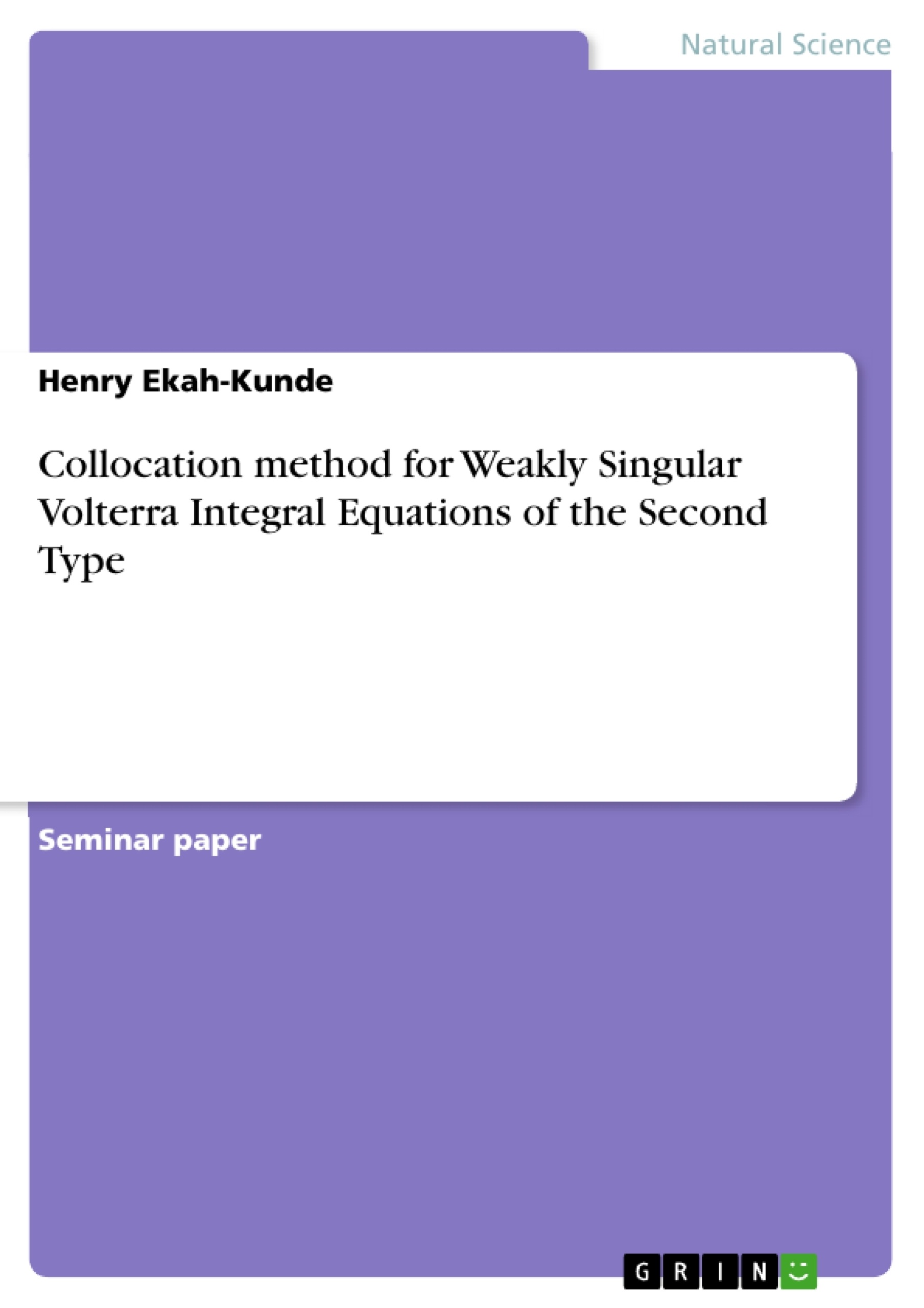In scientific and engineering problems Volterra integral equations are always encountered. Applications of Volterra integral equations arise in areas such as population dynamics, spread of epidemics in the society, etc. The problem statement is to obtain a good numerical solution to such an integral equation.
A brief theory of Volterra Integral equation, particularly, of weakly singular types, and a numerical method, the collocation method, for solving such equations, in particular Volterra integral equation of second kind, is handled in this paper. The principle of this method is to approximate the exact solution of the equation in a suitable finite dimensional space. The approximating space considered here is the polynomial spline space. In the treatment of the collocation method emphasis is laid, during discretization, on the mesh type. The approximating space applied here is the polynomial spline space. The discrete convergence properties of spline collocation solutions for certain Volterra integral equations with weakly singular kernels shall is analyzed. The order of convergence of spline collocation on equidistant mesh points is also compared with approximation on graded meshes. In particular, the attainable convergence orders at the collocation points are examined for certain choices of the collocation parameters.
Inhaltsverzeichnis (Table of Contents)
- Introduction
- Volterra integral equations with weakly singular kernel
- Existence and uniqueness of the solution
- Numerical Method – the Collocation method
- The approximating spline spaces
- Discretization of the collocation equation
- Order of Convergence
- Numerical examples
- References
Zielsetzung und Themenschwerpunkte (Objectives and Key Themes)
This paper aims to provide a theoretical framework and numerical solution method for weakly singular Volterra integral equations of the second kind. The paper focuses on finding an approximate solution with a high order of convergence by implementing the collocation method with polynomial splines on graded meshes.
- Existence and uniqueness of solutions for weakly singular Volterra integral equations.
- The collocation method for solving weakly singular Volterra integral equations.
- Convergence rates and order of convergence for the collocation method on different mesh types.
- Numerical examples illustrating the application of the collocation method to various Volterra integral equations with different singular kernels.
Zusammenfassung der Kapitel (Chapter Summaries)
- Introduction: This chapter presents a brief overview of Volterra integral equations, their applications, and the motivation for finding numerical solutions with high order of convergence.
- Volterra integral equations with weakly singular kernel: This chapter defines weakly singular Volterra integral equations of the second kind and discusses the conditions for the existence and uniqueness of their solutions.
- Numerical Method – the Collocation method: This chapter introduces the collocation method for solving weakly singular Volterra integral equations. It explains the use of polynomial spline spaces for approximating the solution and the process of discretizing the collocation equation.
- Order of Convergence: This chapter examines the order of convergence of the collocation method on different mesh types, including uniform and asymmetrically graded meshes. It discusses the advantages and disadvantages of each mesh type and how the choice of mesh affects the convergence rate.
- Numerical examples: This chapter presents several numerical examples that illustrate the implementation of the collocation method for solving weakly singular Volterra integral equations with different singular kernels and initial functions. The examples showcase the accuracy and efficiency of the method.
Schlüsselwörter (Keywords)
This paper explores the collocation method for solving weakly singular Volterra integral equations of the second kind. The key terms and concepts include weakly singular kernels, polynomial spline spaces, graded meshes, order of convergence, and numerical examples.
- Quote paper
- Henry Ekah-Kunde (Author), 2015, Collocation method for Weakly Singular Volterra Integral Equations of the Second Type, Munich, GRIN Verlag, https://www.hausarbeiten.de/document/370809


